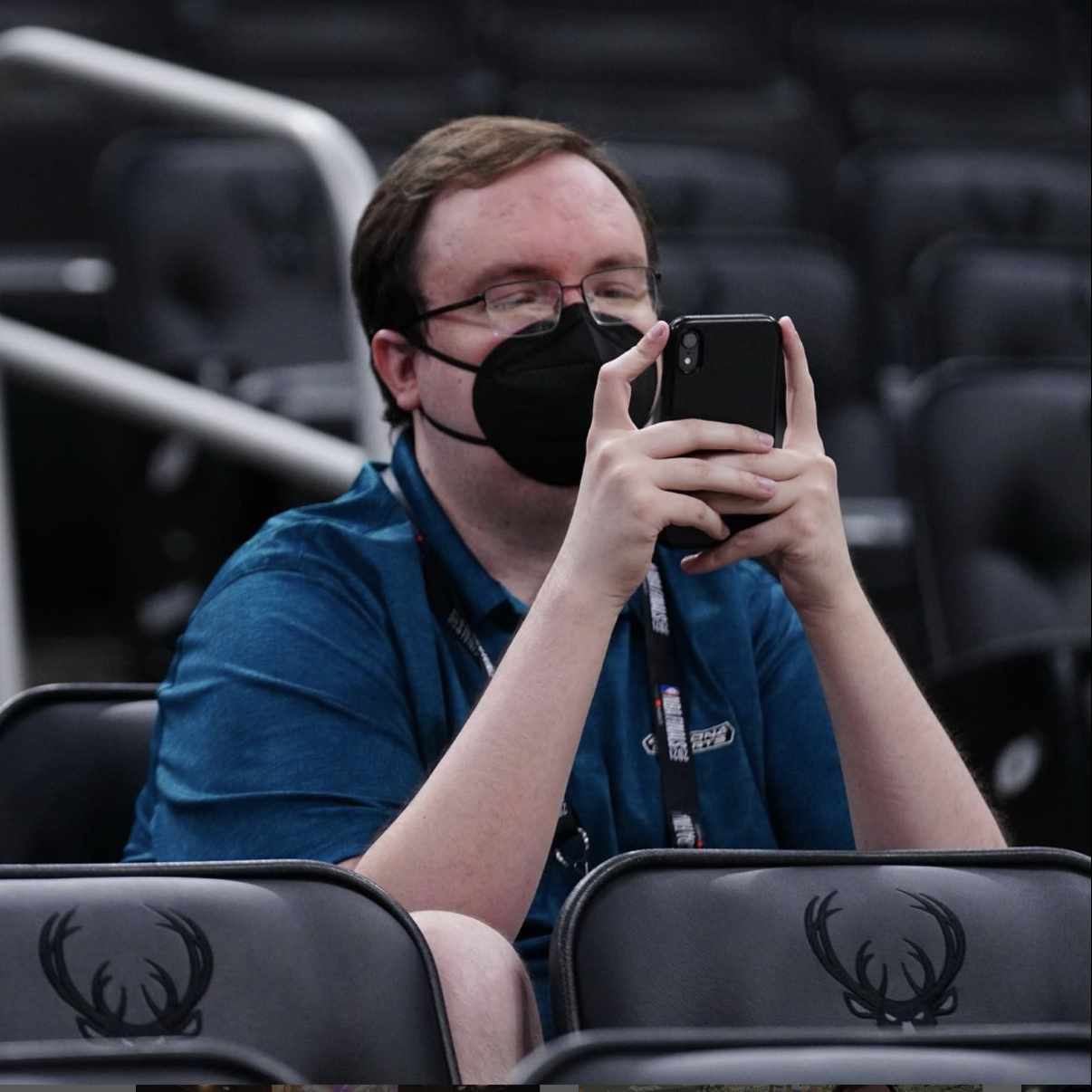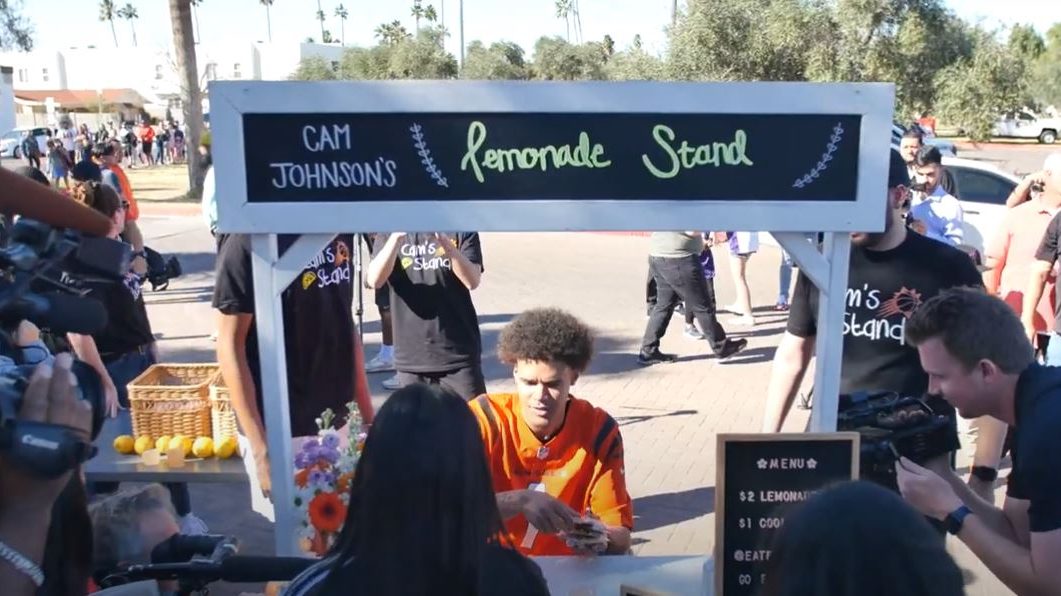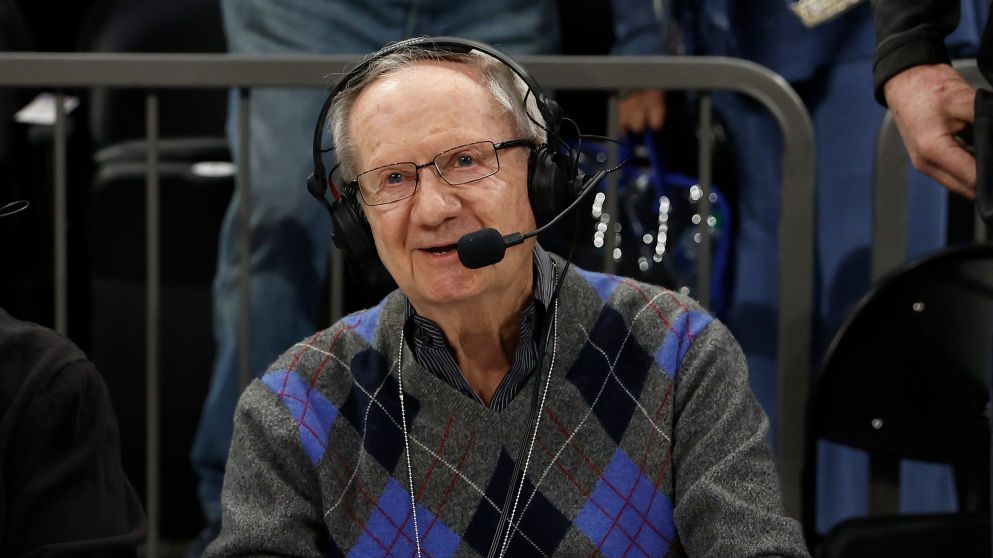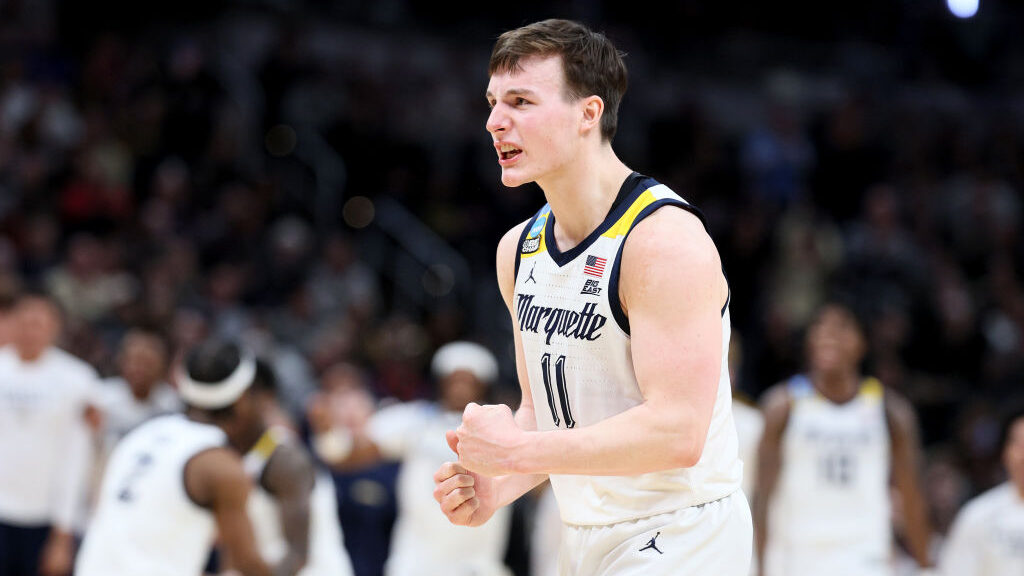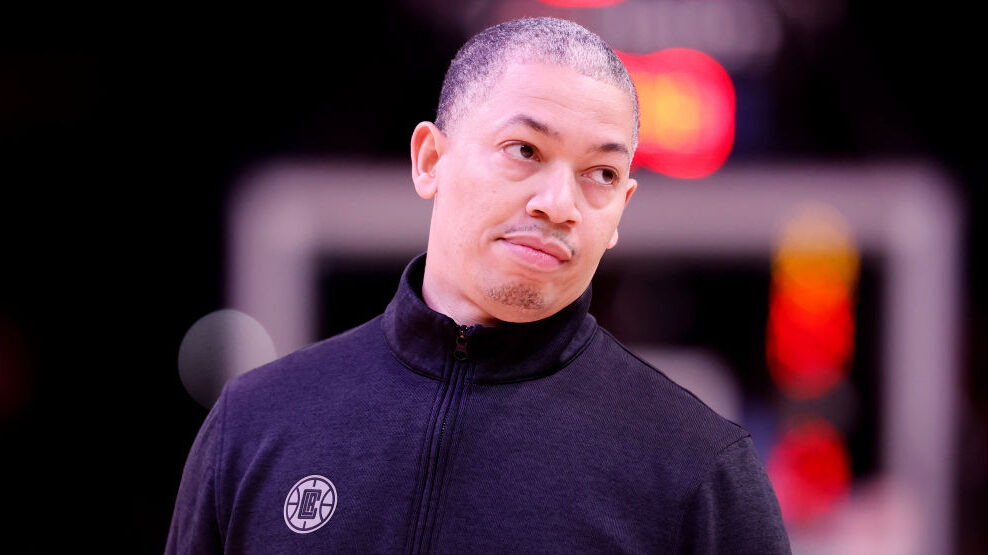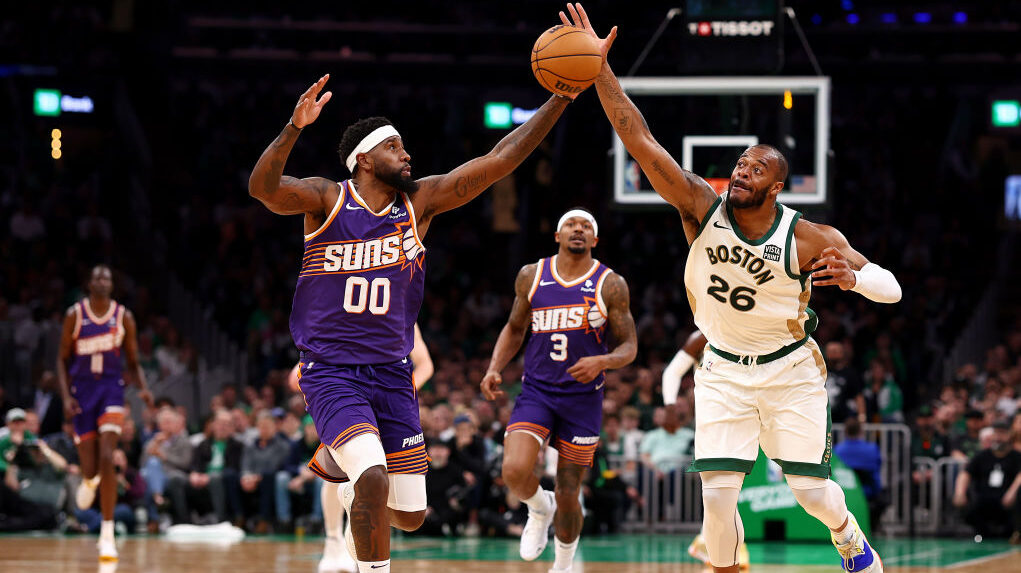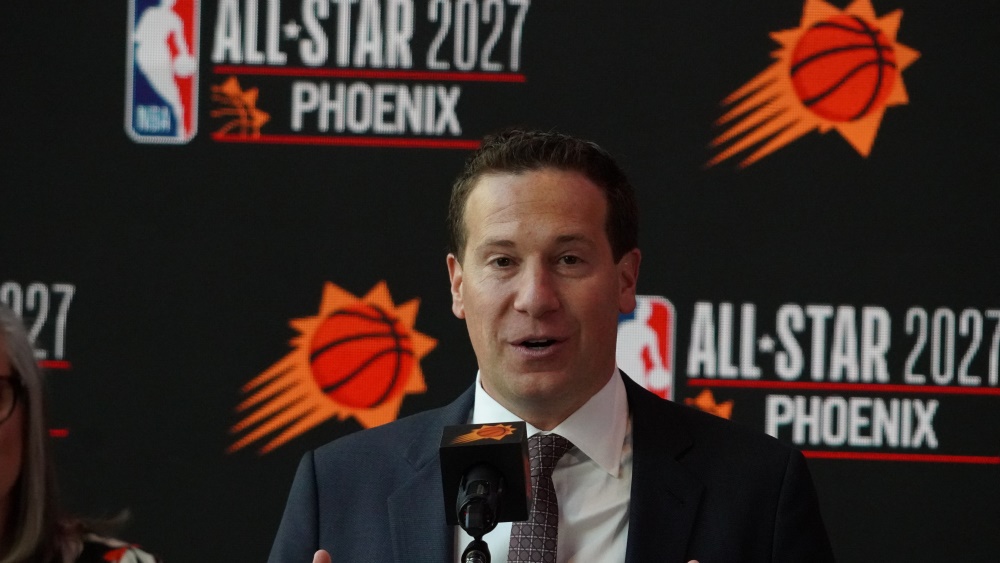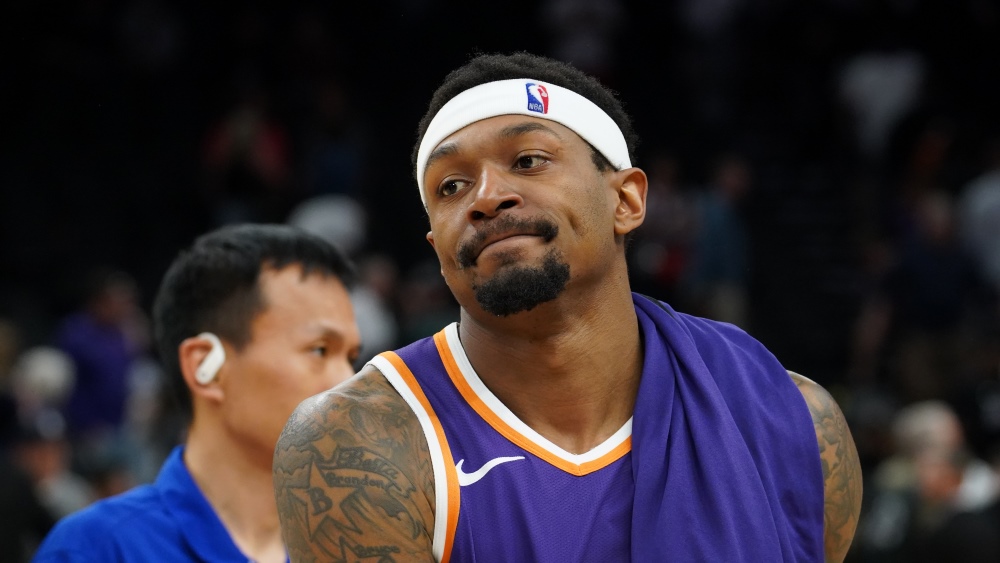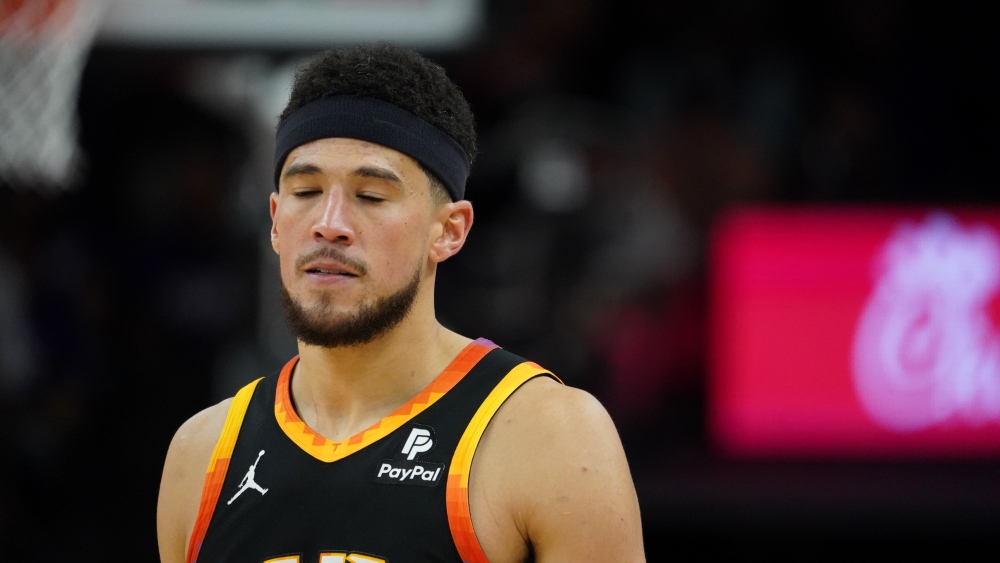Analyzing early days of Suns’ life without Paul, Booker’s upped workload
Mar 1, 2022, 5:45 PM | Updated: 5:54 pm
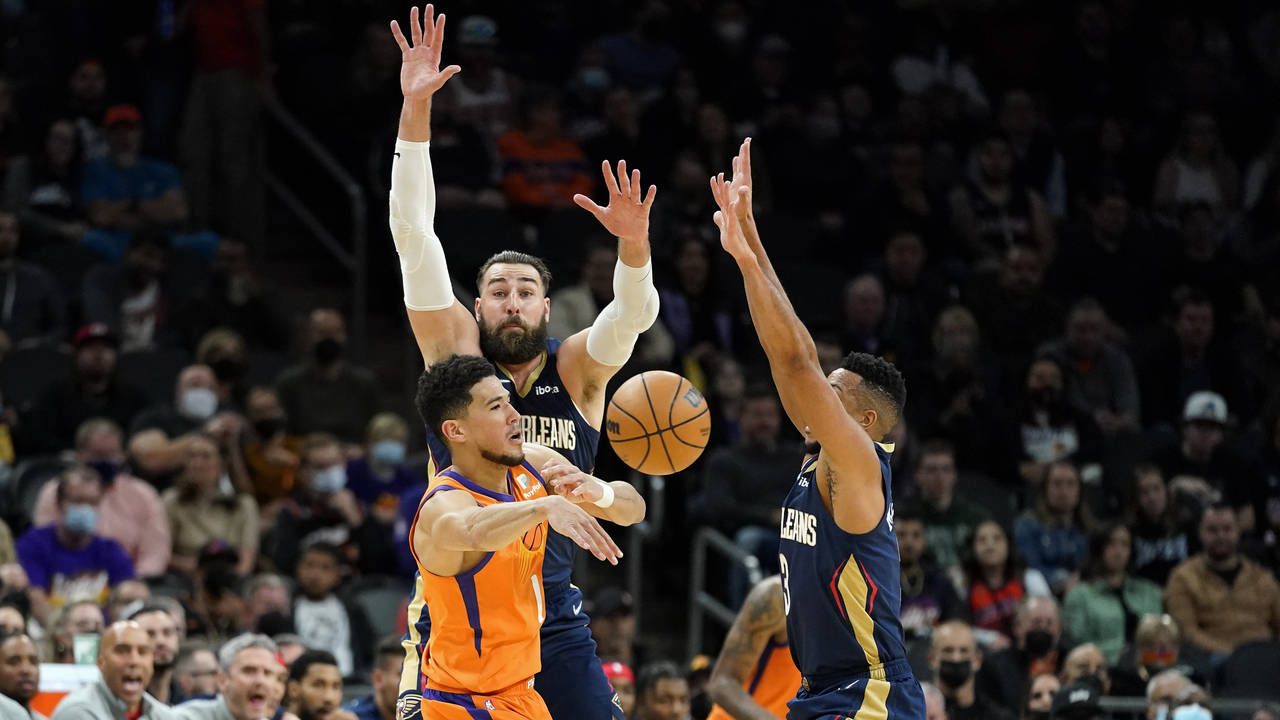
Phoenix Suns guard Devin Booker (1) is pressured by New Orleans Pelicans center Jonas Valanciunas and guard CJ McCollum (3) during the first half of an NBA basketball game, Friday, Feb. 25, 2022, in Phoenix. (AP Photo/Matt York)
(AP Photo/Matt York)
PHOENIX — We’ve dipped our toes into the shallow end of what Phoenix Suns basketball looks like while Chris Paul is injured. Nothing too substantial, but enough to learn a few things three games in.
The most obvious starting point is that CP3’s absence is magnified by CP15’s, backup point guard Cam Payne, who has missed the last 15 games due to a sprained right wrist. Head coach Monty Williams said after practice on Tuesday that Payne was able to play 3-on-3, 4-on-4 and some brief 5-on-5 in a pickup setting on Monday. While Tuesday’s practice didn’t have much going through contact, Payne was also a full participant in it.
The next steps for Payne, per Williams, are playing 5-on-5 with an NBA group, getting through that soreness in his wrist and then having the medical staff sign off on his return. He is listed as probable for Wednesday’s game against the Portland Trail Blazers.
Payne’s return will be huge because it will take some of the load off of Devin Booker.
Across the 1-2 stretch out of the All-Star break across 3.5 days, Booker’s workload is really flirting with the line of being unsustainable. The 38.3 minutes per game is high, but so is the amount of responsibility he holds offensively for running the system and also setting up his teammates. And before we wind too far down this road, I’ll address later why this is fine at the moment and how the Suns and Booker know better than anybody what’s OK for him.
To get back to it, if Booker running primary actions or coming off screens to get into the teeth of the defense is the overwhelming source of offense for the Suns in half-court settings, that’s a problem.
Reserve guard Aaron Holiday checked in for the last two minutes of the first half in Sunday’s loss to the Utah Jazz and was doing more of the initiator work, which are the types of windows the Suns will need to prioritize and also become easier to create when Payne comes back.
To be clear, Phoenix’s best offense right now is Booker doing what he’s been doing. He has been great, averaging 28.3 points, 5.0 rebounds, 8.0 assists and 3.7 turnovers per game on 48.3% shooting. The Suns’ assist-to-turnover ratio is 2.03 in the three games, right next to their season mark of 2.08. That’s an achievement without the master of that (Paul).
But looking at outside areas like transition and again focusing on half-court offense, the Suns need more baskets from Cam Johnson, Mikal Bridges, Jae Crowder and Deandre Ayton that come from possessions where Booker doesn’t have to exude a lot of effort.
Johnson is at 19.7 points per game from that week and had the most of his field goals out of the three wings across those types of instances, including Bridges setting him up on two separate occasions.
Ayton is the best candidate to step up and get the most out of more of the ball being available, which is funny considering how some fans feel like he’s too reliant on Paul to score.
There are the typical moments when Ayton finds room to score in the post, whether it’s on the block, establishing position off the available space or being the dump-off man on a drive by Bridges, Crowder or Johnson.
There’s also a smart wrinkle Ayton added recently, capitalizing on opposing drop coverages by drifting into the midrange area. In a neat nugget The Timeline Podcast’s Mike Vigil found, Ayton is shooting 64% from this area of the floor in his last 10 games.
If teams are going to deny the paint against him, he’s shown he has the touch.
Remember the last two minutes in the first half of the Jazz game I mentioned with Holiday in? Look who set Ayton up on those last two clips.
Ayton spoke on finding that middy.
“I’m realizing teams have adjusted and locked down the paint, I wouldn’t say completely, but when it comes to rolling and trying to look for that dump down, I wouldn’t say it’s not there but teams are making it difficult,” he said Tuesday. “So I’m just playing in the short roll now and taking what they give me.”
Ayton has even knocked down two 3-pointers. He said he’s eager to prove how he can be more effective and score from all three levels, noting that the coaching staff is telling him to let that 3 go.
Are 3s from Ayton going to be the best look for the Suns in the playoffs? Of course not. But it can be another small contribution to the offense that’s not asking much out of Booker. Add up enough of those, like Bridges and Johnson running through those off-ball motions or Crowder’s floaters, and you’ve got enough where it’s not too taxing on Booker.
Also, to the note of those possessions for the twins, Ayton made a great point in that those now sometimes turn into occasions where the wings have got to look to pass sometimes or suck in the defense to get someone else open. That’s the type of growth we can see from that group that would translate to the postseason.
Phoenix needs more of that in the coming weeks. And that’s not even diving in on guys like Payne, Holiday and Landry Shamet who need to help with that effort as well.
The Suns are smart. They know both from an analytical and philosophical standpoint what’s pushing it when it comes to too much on Booker’s plate. Williams in the past has mentioned studies they’ve seen on a certain amount of dribbles per game wearing guys down, and he mentioned it again on Tuesday in relation to Booker.
My theory, especially based on how little of the actual offense was run during stretches of these games, was that it was an accelerated learning period for Point Book to get in this role he will continue playing during this period.
Here’s what Williams had to say on that idea.
“I think it was just like necessary learning or necessary situations,” he said Tuesday on the idea of accelerated learning for Booker. “I put him in a lot of tough spots. To have him handle the ball that much and every game, it’s hard. The thing that I know he knows and I’m sure the fans know, I have a lot of confidence in Book to absorb and deal with stuff.
“Sometimes I put him in a lot of situations that can be a bit overwhelming but I believe in him. I believe in his willingness to be great and I know he’s not going to run. That’s the thing that I’m impressed with with him is that he’s just not afraid.”
Williams acknowledged some of those positions he put Booker in were tough and that there will be times in the future they will need Booker to be the point guard.
To that point and my theory, this will help a lot down the line. When I asked Williams about that turbocharged three-game workload for Booker benefitting them over the next couple weeks, he referenced last season’s acquisition of Torrey Craig allowing them to experiment with switching defensively at all five positions. They figured that out before the postseason, where it absolutely came in handy.
That’s the promising glass-half-full perspective on this time while Paul’s right thumb heals, that the Suns come out better because of it.
They had other issues percolate in the three games like transition defense and defensive rebounding, constants of the program that can fade occasionally when the environment changes. Those will get ironed out. Instead, it’s about the constants they can actually gain more than anything else.

